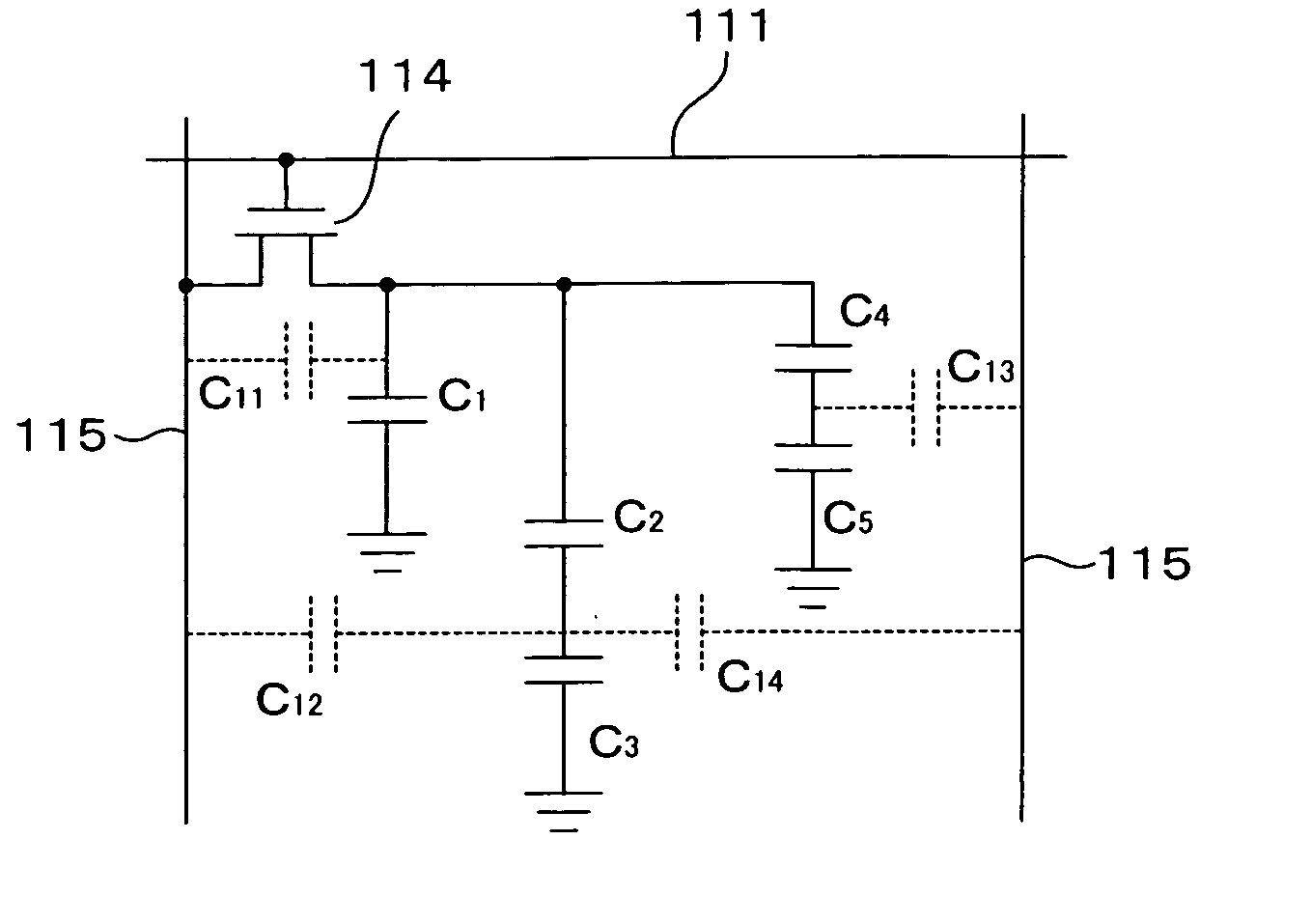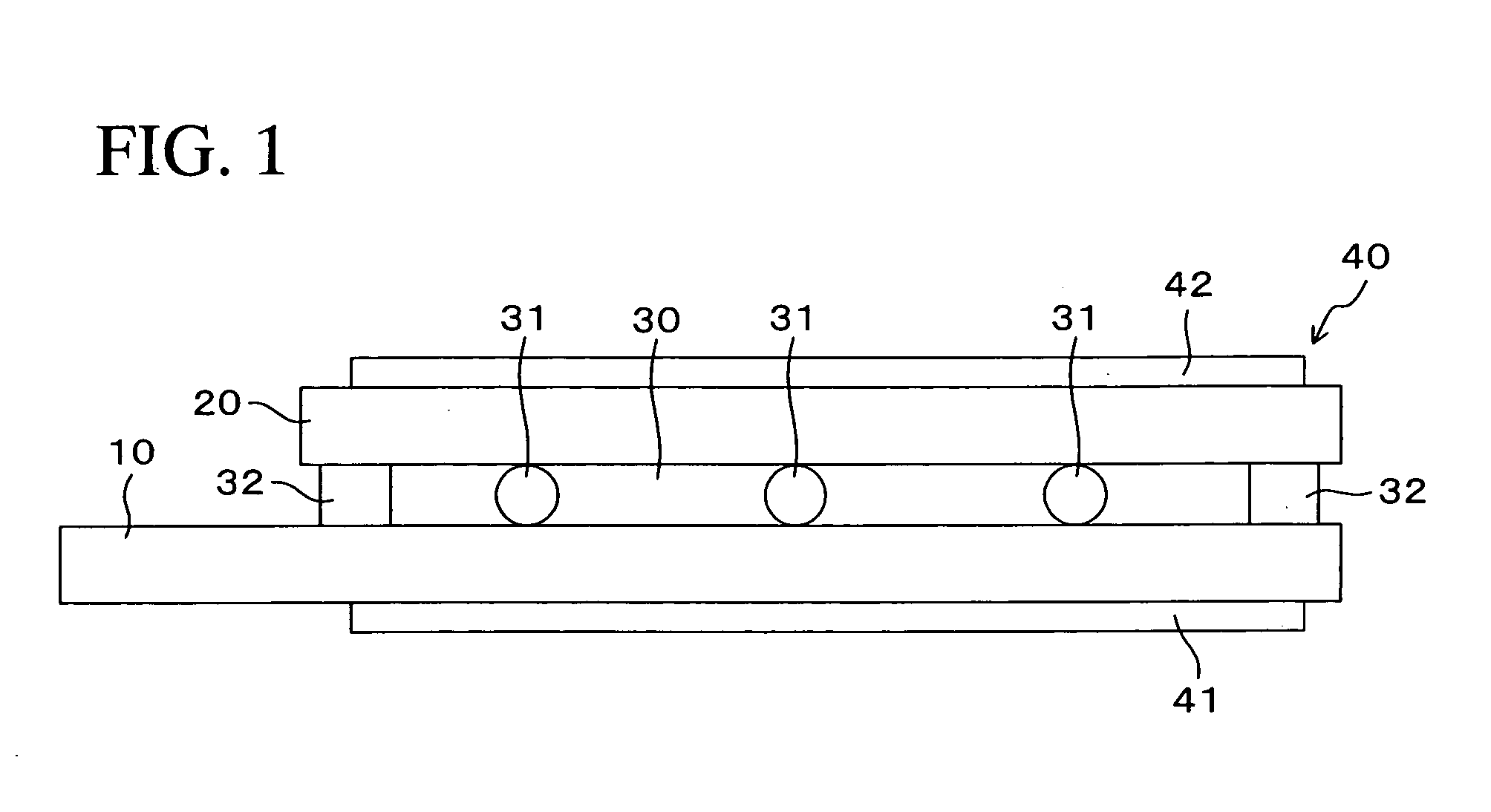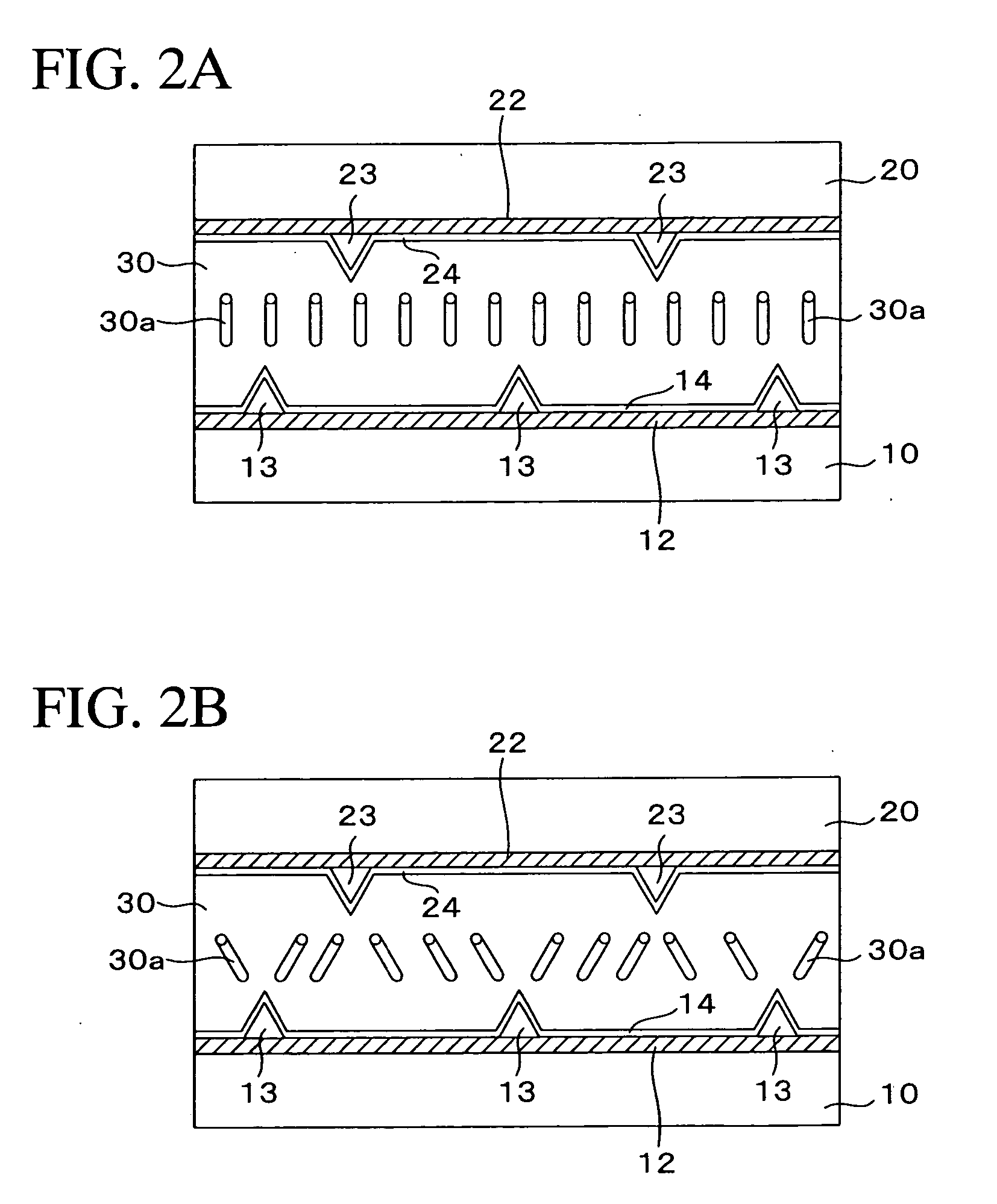Liquid crystal display device
a liquid crystal display and vertical alignment technology, applied in static indicating devices, instruments, non-linear optics, etc., can solve the problems of significant decrease in aperture ratio, poor viewing angle characteristics, and large contrast and color changes, so as to suppress the decrease in transmittance in the intersection of the control electrode and the slit, suppress the decrease in transmittance in the intersection of the interconnection and the slit, and achieve no loss of aperture ratio
- Summary
- Abstract
- Description
- Claims
- Application Information
AI Technical Summary
Benefits of technology
Problems solved by technology
Method used
Image
Examples
first embodiment
[0083]FIG. 11 is a plan view showing a liquid crystal display device of a first embodiment of the present invention, and FIG. 12 is a cross-sectional schematic view thereof.
[0084] As shown in FIG. 12, the liquid crystal display device of the present embodiment includes two substrates 110 and 120 made of transparent thin plates, such as glass plates or the like, and vertical alignment-type liquid crystals (liquid crystals with negative dielectric anisotropy) contained between these substrates 110 and 120. As shown in FIG. 11, a plurality of gate bus lines 111 extending horizontally and a plurality of data bus lines 115 extending vertically are formed on the substrate 110. The pitch of the gate bus lines 111 is, for example, approximately 300 μm, and that of the data bus lines 115 is, for example, approximately 100 μm. Each of the rectangular regions defined by the gate bus lines 111 and the data bus lines 115 is a picture element region.
[0085] On the substrate 110, auxiliary capaci...
second embodiment
[0116]FIG. 14 is a plan view showing one picture element of a liquid crystal display device of a second embodiment of the present invention. In FIG. 14, the same components as those in FIG. 11 are denoted by the same reference numerals, and will not be further described in detail.
[0117] In the present embodiment, as shown in FIG. 14, the control electrode 113 and the sub picture element electrode 116c are electrically connected through a contact hole 132c formed in the second insulating film. Accordingly, if the voltage at the sub picture element electrode 116a is denoted by A, the voltage at the sub picture element electrode 116b is denoted by B, the voltage at the sub picture element electrode 116c is denoted by C, and the voltage at the sub picture element electrode 116d is denoted by D when a display voltage is supplied through the TFT 114, A=C=D>B is obtained.
[0118] In the first embodiment shown in FIG. 11, when a sufficiently high voltage is applied as a display voltage, the...
third embodiment
[0128]FIG. 17 is a plan view showing one picture element of a liquid crystal display device of a third embodiment of the present invention. The present embodiment differs from the first embodiment in that the shapes of sub picture element electrodes delimited by slits are different, but other components are basically the same as those of the first embodiment. Accordingly, in FIG. 17, the same components as those in FIG. 11 are denoted by the same reference numerals, and will not be further described in detail.
[0129] In the present embodiment, as shown in FIG. 17, a picture element electrode is divided into four sub picture element electrodes 151a, 151b, 151c, and 151d by slits 150a extending obliquely and slits 150b extending vertically. The sub picture element electrode 151a is horizontal-line symmetric. The shape of the sub picture element electrode 151a and the position thereof relative to the protrusion 124 are determined so that four regions (four domains) in which the orienta...
PUM
 Login to View More
Login to View More Abstract
Description
Claims
Application Information
 Login to View More
Login to View More - R&D
- Intellectual Property
- Life Sciences
- Materials
- Tech Scout
- Unparalleled Data Quality
- Higher Quality Content
- 60% Fewer Hallucinations
Browse by: Latest US Patents, China's latest patents, Technical Efficacy Thesaurus, Application Domain, Technology Topic, Popular Technical Reports.
© 2025 PatSnap. All rights reserved.Legal|Privacy policy|Modern Slavery Act Transparency Statement|Sitemap|About US| Contact US: help@patsnap.com



